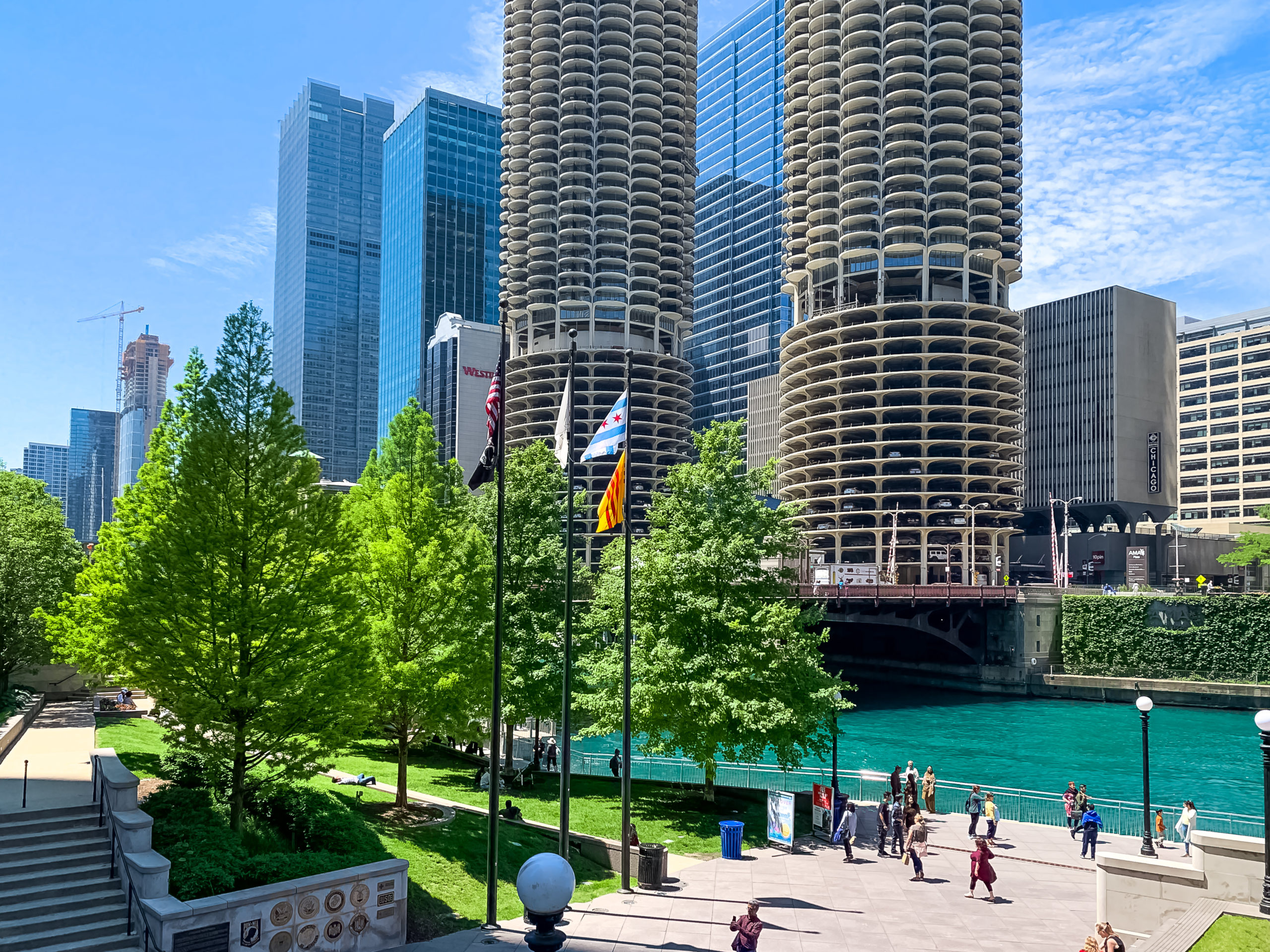Author: Sam Berrafato
Driving Forward Sustainability in a “Hard to Abate Emissions Sector”
Mike Ireland
President and CEO, PCA
When I joined the Portland Cement Association, it wasn’t for the fame – the cement and concrete industry does not often find itself in the limelight. Rather, I was drawn to the innovative and hardworking people that make up PCA’s member companies and to be a part of our nation’s literal (though overlooked) foundation. Cement and concrete are in almost every structure, providing strength, durability and resiliency not found in many other places; this industry quietly enables us to go about our daily lives.
We now find ourselves thrust into the mainstream narrative with cement and concrete manufacturers at the heart of the Biden Administration’s $1 trillion infrastructure plan. With the realities of climate change accelerating, the U.S. needs that infrastructure to withstand the natural disasters we increasingly face. At the same time, society is demanding action on emissions, and I believe that we have a responsibility to answer that charge. The spotlight has found us, and our industry is grabbing this opportunity to accelerate change with both hands – we can come together to reduce our carbon footprint while increasing production and delivering sustainable infrastructure.
A year ago, on behalf of the U.S. cement industry, PCA released a Roadmap to Carbon Neutrality – an ambitious plan outlining actions and opportunities across the entire cement-concrete-construction value chain. We’ve seen progress on this journey – and we need every stakeholder, from the smallest construction company to the federal government, to work with us on continuing to further this goal.
The Roadmap advocates for the increased use of low-carbon cement, such as portland limestone cement, and there are now 44 state Departments of Transportation that accept this mix, which results in 10% less carbon. In California alone, using PLC has the potential to reduce carbon dioxide emissions by 28,000 tons a year — the equivalent of removing more than 6,000 cars from the road.
Multiple cement manufacturers in the U.S., with support from the Department of Energy, have begun pilot projects around emerging technologies that capture carbon before it is emitted and reusing it for another purpose or storing it – commonly referred to as carbon capture, utilization, and storage (CCUS).
I want to recognize the work that has been done, but there are so many more opportunities to unlock in the Roadmap.
This plan considers the full lifecycle of cement and concrete – no material, structure or technology can be considered in isolation, and PCA looks to the wider construction industry as partners on this journey. The Roadmap identifies opportunities to lower emissions at each step of concrete construction, from updating building codes to more thoughtfully designing a structure for its intended use, to shifting to zero emissions fleets to deliver the materials, to measuring and accounting for the carbon that’s absorbed within concrete over its lifetime.
We are proud of the developments to-date, and we applaud all our members and partners who have taken the first steps in creating and implementing the solutions needed to bring us toward a more sustainable future.
With your help, let’s do more. Read the full Roadmap to Carbon Neutrality and you reach out to us at customerservice@cement.org to learn more about the cement and concrete industry’s path toward a sustainable, resilient future.
Climate Week NYC Panel Discussion: How the U.S. and Global Cement and Concrete Industry are Progressing on their Path to Net Zero
From Mike Ireland, PCA
With every industry and sector looking to reduce emissions, opportunities to bring diverse groups of stakeholders together to discuss progress and share key learnings are vital to continued progress.
I am pleased to share that on Tuesday, September 20, I will be participating in a Climate Week panel, titled Towards Net Zero – Cement and Concrete Industry Action and Progress 2050 Roadmap. As we mark the one-year anniversary of PCA’s Roadmap for Carbon Neutrality, we will talk about the policies and tools that are critical in building a green, net zero concrete future.
For industrial sectors that are viewed as challenging to decarbonize but critical to our nation’s economy and efforts to build resiliently, it’s necessary we work together across the full cement-concrete value chain to shift mindsets and increase awareness and adoptions of Roadmap solutions for near and long-term benefits.
I will be joined by Selwin Hart, Special Advisor to the Secretary General of the UN for Climate Action and Just Transition; Maria Jose Garcia, Executive Director of Federacion Interamericana del Cemento; Ron Henley, President of GCC America and Chairman of the Portland Cement Association; Filiberto Ruiz, President and CEO of Votorantim Cimentos; Thomas Guillot, CEO of the Global Cement and Concrete Association and Jan Jenisch, CEO of Holcim and President of the Global Cement and Concrete Association. Our discussion will focus on recent progress and next steps for the cement-concrete industry reaching carbon neutrality by 2050.
Join me in-person or virtually by registering here.
Hope to see you there.
Opinion: A concrete way to build affordable, resilient, energy-efficient homes in Colorado’s wildfire zones
Reducing Emissions in the Use-Phase of Concrete Infrastructure
Rick Bohan
Senior Vice President, Sustainability
The Roadmap to Carbon Neutrality, released by the Portland Cement Association, addresses the five links in the cement-concrete-construction value chain critical for reaching carbon neutrality. Opportunities to lower emissions at the cement plant and optimize the manufacture and use of concrete are important parts of the value chain, but there are also opportunities to reduce and remove carbon once a building is constructed or a pavement is in place.
Concrete made with cement creates long-lasting, energy efficient, and climate-adapted structures. Concrete’s thermal mass, strength, durability, and resiliency all contribute to cutting use emissions – and the use-phase of infrastructure and buildings is by far the longest in a building’s life cycle.
Additionally, through a process called carbonation, concrete naturally absorbs carbon dioxide in the air. Concrete is a porous material, like a sponge, and carbonation is a naturally occurring process where CO2 in the air reacts with the calcium hydroxide within concrete forming calcium carbonate, a naturally occurring mineral that is a common ingredient in everything from toothpaste to antacids.
In fact, for all the concrete produced in the U.S. between 1990 and 2018, more than 300 million metric tons of CO2 will be absorbed and sequestered by concrete over its service life. Concrete is actually considered a carbon sink as it permanently stores CO2 – even when it is broken up or demolished that CO2 remains permanently trapped.
Concrete complements existing carbon sinks (like forests) by not just passively absorbing CO2 but also offering a place to permanently trap captured CO2. Carbon dioxide can also be injected into fresh concrete or introduced under pressure in chambers containing concrete products as a solution for storing captured carbon.
How much CO2 is sequestered depends upon the surface area of concrete that is exposed to the atmosphere and the length of exposure. Over the course of its service life, a concrete structure can reabsorb at least 10% of the CO2 generated during the production of cement and concrete. That percentage will only increase as the industry continues to implement more sustainable manufacturing methods and materials and as we better quantify this unique process.
In addition to being a carbon sink, concrete is the foundation of sustainable cities by making buildings and roads more efficient, cutting use-related emissions.
Homes with concrete walls can use up to 15% less energy than other homes. Concrete does not rust, rot, or burn, therefore saving energy and the resources needed for regular maintenance or repairs to our buildings and infrastructure. Additionally, concrete makes urban areas cooler because its lighter color reflects more sunlight than darker materials.
The durability of pavement is extremely important to driving down emissions as well. Not only are poor roads a nuisance for drivers, but they are also bad for the environment. Fuel consumption and emissions from vehicles depend on several factors, including pavement-vehicle interaction, which put simply is the quality of the road. When the surface conditions are good, vehicles can travel with optimal fuel consumption.
The impact of rough roads has been seen across the country. For example, over a five-year period, 1 billion gallons of excess fuel was used in California due to poor pavements. Similarly, a study by the MIT Concrete Sustainability Hub found that excessive fuel consumption on 5,000 miles of Virginia interstate highways resulted in 1 million tons of carbon dioxide emissions over a seven-year period.
With the need to build sustainable infrastructure that limits use emissions, concrete is a key part of the equation. With the added benefit of its ability to sequester carbon, concrete offers a unique and versatile solution and building material.
Concrete: A Sponge for Carbon Dioxide
Rick Bohan, vice president of sustainability for the Portland Cement Association, explains the fifth link in the PCA Roadmap to Carbon Neutrality value chain: using concrete as a carbon sink.





